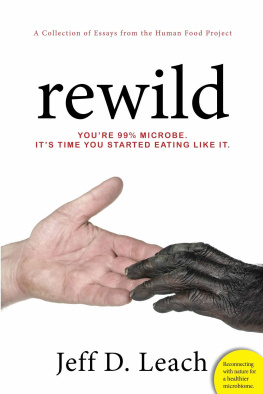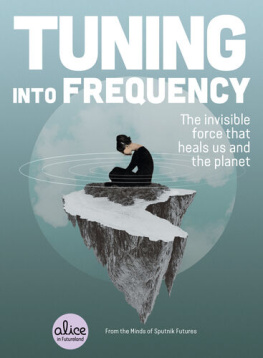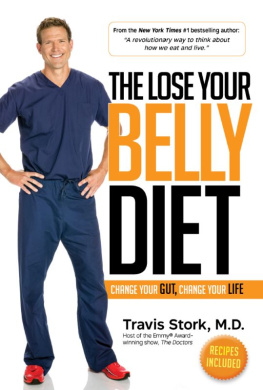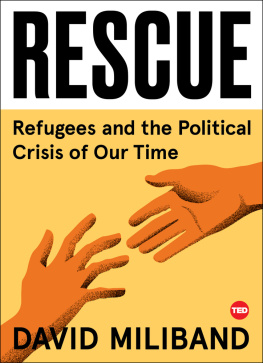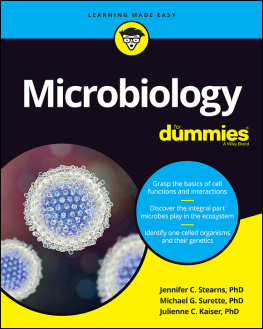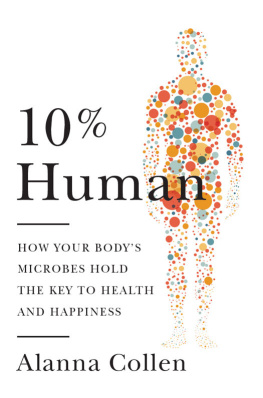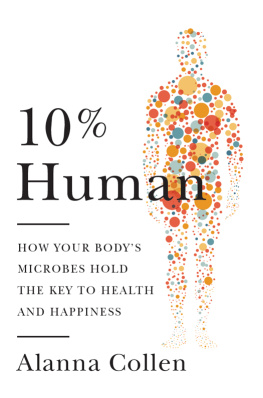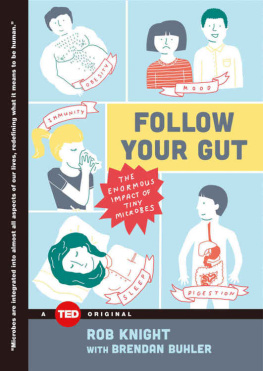Jeff Leach - Rewild
Here you can read online Jeff Leach - Rewild full text of the book (entire story) in english for free. Download pdf and epub, get meaning, cover and reviews about this ebook. year: 2015, publisher: CreateSpace Independent Publishing Platform, genre: Science. Description of the work, (preface) as well as reviews are available. Best literature library LitArk.com created for fans of good reading and offers a wide selection of genres:
Romance novel
Science fiction
Adventure
Detective
Science
History
Home and family
Prose
Art
Politics
Computer
Non-fiction
Religion
Business
Children
Humor
Choose a favorite category and find really read worthwhile books. Enjoy immersion in the world of imagination, feel the emotions of the characters or learn something new for yourself, make an fascinating discovery.
- Book:Rewild
- Author:
- Publisher:CreateSpace Independent Publishing Platform
- Genre:
- Year:2015
- Rating:3 / 5
- Favourites:Add to favourites
- Your mark:
- 60
- 1
- 2
- 3
- 4
- 5
Rewild: summary, description and annotation
We offer to read an annotation, description, summary or preface (depends on what the author of the book "Rewild" wrote himself). If you haven't found the necessary information about the book — write in the comments, we will try to find it.
Rewild — read online for free the complete book (whole text) full work
Below is the text of the book, divided by pages. System saving the place of the last page read, allows you to conveniently read the book "Rewild" online for free, without having to search again every time where you left off. Put a bookmark, and you can go to the page where you finished reading at any time.
Font size:
Interval:
Bookmark:
AUTHORS NOTE
This book is a collection of essays from the Human Food Projects website (www.humanfoodproject.com). That said, this is not a traditional book with an obvious beginning and end - but rather a collection of essays that share a common thread: the human microbiome.
100% of the proceeds from this book go to support our research in Africa and Mongolia.
OTHER TITLES BY THE AUTHOR
Honor Thy Symbionts
Bloom (forthcoming, Victory Belt Publishing)
See also Human Food Bar
Play along for a moment.
The year is 2015 and all hell has broken loose. You're part of a small band of people wandering the post-apocalyptic streets of downtown Atlanta, staying one step ahead of the flesh-eating walkers. If spending all day trying to avoid being infected (or possibly eaten) by a zombie wasnt bad enough, months on the run drinking iffy water and eating what you could scrounge has taken its toll on your gut - or at least thats what you think. Most of the time you are doubled-over and good day is measured by your ability to keep the tiniest nibble of food in your gut. Youre wasting away.
As luck would have it, your small band finds itself standing outside an unassuming building among a sea of unassuming buildings, slung across a sprawling campus on the outskirts of Atlanta. Ground zero - you have found The Center for Disease Control and its Primate Biomedical Research Center - aka chimp asylum. After some discussion, sympathetic researchers inside grant you entrance.
If government employees who specialize in the worlds nastiest infectious diseases know how to do anything, its how to hunker down during a zombie apocalypse. Completely self-contained with their own water supply, electricity and a pile of shelf stable food, the group of a dozen researchers could probably make it a few years if need be, or however long it takes Will Smith and Bruce Willis to solve a little zombie problem.
Amid the various offices and laboratories in the building are rows of caged chimpanzees participating in biomedical research. Throughout the zombie ordeal, the researchers have dutifully cared for the animals, continuing daily feeding and medications. Amazingly, in the center of the building sits a lush, park-like enclosure half the size of a football field. Amongst the trees and dense tropical-like foliage, (maintained with mechanically controlled humidity and rainfall), are two-dozen common chimpanzees ( Pan troglodytes ) roaming about eating foods that are familiar. This recent population had been captured near Gombe in Tanzania. They had arrived at the CDC days before the zombie invasion and had not transitioned into the biomedical program - yet.
One of your new hosts notices that you are ill and queries your problem, (it seems your two visits to the bathroom in an hour gave you away). After listening to you recount your symptoms, one of the researchers who had gathered with the others to hear your story suggests you might have a nasty bug, possibly even Clostridium difficile - or C Diff as it is otherwise known. He asks if you had been hospitalized recently or taken broad-spectrum antibiotics, either of which (or a combination of) could be contributing to your problem. Turns out days before the apocalypse you had some minor surgery at a local hospital and had taken not only one course of antibiotics, but several.
As the days wore on at chimp asylum, your frequent visits to the bathroom had only gotten worse, even after the researchers had given you more antibiotics. The antibiotics in fact, had only made things much worse. One of the researchers - a microbiologist tasked with screening stool samples from new chimps for problematic viruses and pathogens using metagenomic tools - suggests that you might consider a fecal transplant.
As the name implies, a fecal transplant is just that. Following a high-volume enema deep into your colon (from the business end of your GI tract) to clean things out, a small sample of a donor stool from a (presumably) healthy individual is inserted. (Nasogastric tube from the top end is used in some instances - more of a European thing). The donor sample teeming with trillions of (presumably) healthy bacterial cells then sets up shop in your colon. Balance is then reinstated in an ecosystem sent into a tailspin by the opportunistic pathogen(s) that bloomed following a perturbation - presumably from the scorched earth effect of said broad-spectrum antibiotics. By doing a number on the diversity and abundance of microbes in your gut - both friend and foe and everything in between - broad-spectrum antibiotics have the potential to significantly shift the composition suggests, fecal transplants are impressively effective in solving recurrent C. diff infections - one such opportunistic pathogen.
Given your current state and the researchers explanation of the procedure (along with his assurance he could pull it off), as well as the evidence to support its potential success in solving your problem, the only question remaining is who the donor would be? More to the point, how do you define a healthy gut microbiome in a potential donor, especially among a rag tag bunch of apocalyptic survivors just trying to make it to the next day? Do you pick the older guy, the 20-something female you been traveling with or maybe her 14-year old little brother? The Mexican guy looks healthy, but so does the Asian couple - though hes a bit on the heavy side. But does that even matter? What about the researchers? A mixed bag of gender, age, body-type, race and attitude - could one of them would be suitable?
Maybe you could ask the potential donors for a sample of test poo for the microbiologist to evaluate - youre in a biomedical research facility after all. The pre-screening of samples with high-throughput sequencing technology would provide a snapshot of the microbes in the guts of your comrades and allow you to weed out any obvious bad donors based on the nasty bugs they may be carrying. Yet alas, while the researcher has all the equipment to pull this off, they had run out of some critical supplies just before the coming of the walkers and had not been resupplied. Pre-screening was out.
As you scan over the faces and bellies of your potential donors the doe-eyed primate handler blurts out, What about one of the chimps that just came in from Tanzania? A little taken back at first, you press your face to the glass of the football field sized jungle enclosure and consider the possibility.
Even though we differ in some aspects of appearance and behavior, humans share 99% of the same DNA and have nothing to do with diet and immunity (and microbes), we are even more similar than the 99% figure suggests.

Short of the tranquilizer shot into their rump back in Tanzania, the chimps in the jungle enclosure had not been exposed to any medication or funky monkey chow fed to the chimps already enrolled in the biomedical program. To ease the transition into Western life and biomedical research, they were enjoying (as much as a captive chimp could) their familiar foods and vegetation within the enclosure. These chimps were as close to pure or untainted as any chimp could be in Atlanta - or anywhere in the US for that matter - and lucky for you, the first thing the microbiologist did when the new batch of chimps arrived was to collect stool samples and analyze them. No nasty viruses and nothing out of the ordinary just pure, unadulterated monkey poo from the birthplace of humanity; East Africa.
You weigh up the pros and cons. As with humans, 80-90% of all the bacteria in the chimp gut belong to (45 individuals) successfully killed more than 1,300 pounds of red colobus, bushpigs and bushbucks, (which included more than 100 red colobus monkeys). Given the researchers are unable to witness every hunt, the estimates for 1992 are thought to be much higher.
Next pageFont size:
Interval:
Bookmark:
Similar books «Rewild»
Look at similar books to Rewild. We have selected literature similar in name and meaning in the hope of providing readers with more options to find new, interesting, not yet read works.
Discussion, reviews of the book Rewild and just readers' own opinions. Leave your comments, write what you think about the work, its meaning or the main characters. Specify what exactly you liked and what you didn't like, and why you think so.

